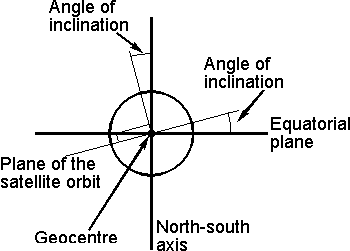Highly Elliptical Satellite Orbits
Notes and details about satellite elliptical orbits often referred to as the Highly Elliptical Orbit, HEO: their advantages and key points.
Satellite Orbits Includes:
Satellite orbit types & definitions
Low earth orbit, LEO
Geostationary orbit, GEO
Highly elliptical orbit HEO
Techniques for launching satellites into orbit
While circular orbits may be the obvious solution for many satellites, elliptical orbits have many advantages for certain applications.
The elliptical orbit is often called the Highly Elliptical Orbit, HEO.
As a result of this many satellites are placed in elliptical orbits, especially where certain attributes are required. For example it does not require the orbits to be equatorial like the geostationary orbit. This means that polar and high latitude areas can be covered with highly elliptical orbits, HEO.
The satellite elliptical orbit gives a number of coverage options that are not available when circular orbits are used.
Highly elliptical orbit, HEO, basics
As the name implies, an elliptical orbit or as it is more commonly known the highly elliptical orbit, HEO, follows the curve of an ellipse. However one of the key features of an elliptical orbit is that the satellite in an elliptical orbit about Earth moves much faster when it is close to Earth than when it is further away.
For any ellipse, there are two focal points, and one of these is the geo-centre of the Earth. Another feature of an elliptical orbit is that there are two other major points. One is where the satellite is furthest from the Earth. This point is known as the apogee - this is where the satellite moves at its slowest as the gravitational pull from the earth is lower. The point where it is closest to the Earth is known as the perigee - this is where the satellite moves at its fastest.

If the satellite orbit is very elliptical, the satellite will spend most of its time near apogee where it moves very slowly. This means that the satellite can be in view over its operational area for most of the time, and falling out of view when the satellite comes closer to the Earth and passes over the blind side of the Earth. By placing a number of satellites in the same orbit, but equally spaced apart, permanent coverage can be achieved.
The plane of a satellite orbit is also important. Some may orbit around the equator, whereas others may have different orbits. The angle of inclination of a satellite orbit is shown below. It is the angle between a line perpendicular to the plane of the orbit and a line passing through the poles. This means that an orbit directly above the equator will have an inclination of 0° (or 180°), and one passing over the poles will have an angle of 90°.

Those orbits above the equator are generally called equatorial obits, whilst those above the poles are called polar orbits.
Highly elliptical orbit, HEO, applications
The highly elliptical satellite orbit can be used to provide coverage over any point on the globe. The HEO is not limited to equatorial orbits like the geostationary orbit and the resulting lack of high latitude and polar coverage.
As a result it ability to provide high latitude and polar coverage, countries such as Russia which need coverage over polar and near polar areas make significant use of highly elliptical orbits, HEO.
With two satellites in any orbit, they are able to provide continuous coverage. The main disadvantage is that the satellite position from a point on the Earth does not remain the same.
 Written by Ian Poole .
Written by Ian Poole .
Experienced electronics engineer and author.
More Essential Satellite Topics:
Interesting facts about satellites
Satellite orbits
Solar outage
Return to Satellite topics menu . . .


